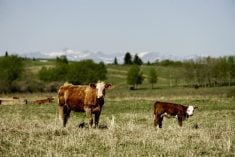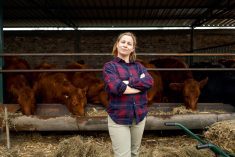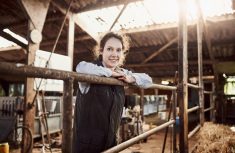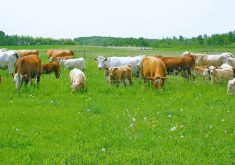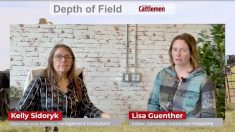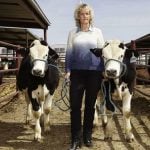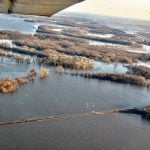Think of the five people you spend the most time with, other than family. How many are either 10 years older or younger than you?
Chip Conley with the Modern Elder Academy has been exploring this concept recently. “The Organization for Economic Co-operation and Development estimates that building multi-generational workforces, and giving older employees greater opportunities, could raise gross domestic product per capita by 19 per cent by 2050,” he writes. He cites another survey from LinkedIn where one in five generation Z employees have not recently spoken with anyone over 55 and 40 per cent of the older folks say the same about speaking with the younger generations. (Gen Zs were born from mid-1990s to early 2010s.) Conley says the home is one of the few remaining areas where people of different generations interact.
Read Also

Building demand together: The impact of Canada’s beef import levy
The beef import levy has become a central tool for ensuring balance in Canada’s beef industry
Working together on the farm or ranch is an amazing example of how learning happens and knowledge is passed between generations. When I think of our young grandson’s knowledge of how an electric fence works and the importance of having a fence tester, I see he understands what many do not. He has yet to touch the electrified fence, but he knows the importance of it in our cattle operation. A true example of the “learn to do by doing” concept taught by 4-H.
Those of us in agriculture may have a different problem than the rest of society: trying to encourage the senior generation to move out of active management and the younger generation to take the reins. At many of the conferences and events I have been to this season, there is a wide representation of ages and genders. At the recent Holistic Management Canada conference, the children’s program had over 30 participants. It was a fantastic session led by students from the Lakeland College Range Team. The activities were varied and engaging, with a farm and ecosystem focus.
During the conference, producers Gabe Brown and Don Campbell discussed the concept of identity loss for farmers and ranchers as they consider turning over the operation. It is exceedingly difficult to understand that feeling of loss when we are not in their boots. Their journey has been very different from that of the coming generation.
Duane Thompson of Tee Two Land and Cattle also spoke at the conference. He shared how the challenging transition from his father affected the process with his own children. The family has had a policy of leaving the farm for a few years before coming back. When their sons came back, they initially entered as employees before working their way up to management and ownership. They have collaborated closely with professionals to put the plan together. He recommends author and farmer Andy Caygeon (previously known as Andy Junkin), as Caygeon had some profound stories that influenced him.
At Lloydminster’s Agri-Visions conference, Andre Poulin of Greenbelt Farms near Wainwright, Alta., spoke about farm transitions. The Poulin family engaged professionals, and developed an advisory council for their multi-enterprise operation to help family members during the transition.
Scott and Alicia Adamson of Makwa, Sask., have spoken about their ranch transition experiences, including in the September 24, 2024 issue of Canadian Cattlemen. They stress the importance of having a direction before meeting with advisors. Initially, when they first went to the accountants and said what they wanted to do, they were met with resistance and told that it would not work. “We just kept saying that it was what we wanted to do, and they (the accountants) needed to figure out how, which they ultimately did,” said Scott.
At a follow-up to a succession planning workshop, one of the participants shared how her family had managed to get the entire family together and intentionally focused on having fun. She believed that before they got into more in-depth planning, it was important to enjoy each other’s company.
These snippets from people’s experiences underscore that each family and operation is unique. Some will say the business comes first and others will say the opposite. They are both right. That emphasis will inform the direction of the transition journey. And whatever the focus, it’s a journey that takes considerable time, commitment and resources.
I am seeing more and more ranchers and farmers sharing their struggle of handing the operation over, which can go a long way to help others in a similar situation. As I have said many times, talking about such struggles is not something that senior farmers and ranchers are used to doing. It requires massive courage and willingness to embrace change.
What does it take to get started? The Beckhard-Harris change equation states that the level of dissatisfaction, the presence of a clear vision and an idea of the required first steps will all influence a person’s openness to change. If one is content with the current situation, does not have a future vision and has no idea of what the next step will be, I suggest the likelihood of embarking on meaningful change is slim to none. However, do not give up hope.
We are learning and discovering more tools all the time on how to come together and create a positive desired future. We are also realizing that breaking large, insurmountable challenges into bite-sized pieces and working on them every day can achieve meaningful results over time.
– Kelly Sidoryk ranches with her family just west of Lloydminster, Alta. She consults in several areas including succession planning and holistic management.



